 Georges Simenon and found they encapsulated the dreamy Paris that I loved.
Georges Simenon and found they encapsulated the dreamy Paris that I loved.
The zinc-topped bars, blue-jawed toughs drinking from dainty wine glasses, Pont Neuf in the rain,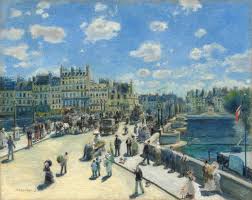 that pre-dinner hour when the lights come on and everyone is mellow, yet galvanised.
that pre-dinner hour when the lights come on and everyone is mellow, yet galvanised.
The centenary of Simenon's birth is next year and Penguin is marking it by reissuing some of his novels.
Simenon was prodigious in every direction. He claimed to have had sex with 12,000 women, although his wife wearily corrected this, saying that the true figure was probably nearer 1,200.

He wrote 500 novels, including 75 featuring the stolid, pipe-smoking detective Maigret, who ate and drank a lot because, as Simenon admitted, 'so did I'.
He hated the word 'literature' but his psychological understanding and sense of place ensured he was rated by many highbrows.
In 1930, Simenon wrote The Strange Case of Peter the Lett, which introduced Jules Maigret, Chief Inspector of the Quai des Orfèvres in Paris; the last Maigret story appeared in 1972 Few other detective novelists wrote so much so well, and particularly so well about drink; Maigret appears in 102 books and short stories.
Maigret appears in 102 books and short stories.
 Any work of fiction seeks to create a world; a good novel succeeds
Any work of fiction seeks to create a world; a good novel succeeds
The world, to be believable, must be properly formed and structured, and ordered with a logical system of rules. This is not to say that the novel's world is always familiar; it need only be coherent.
It’s no surprise either that some of the world’s best-fed fictional detectives are found within the sub-genre of Eurocrime, especially amongst the French and the Italians, where the characters tend to reflect national enthusiasms for all matters culinary.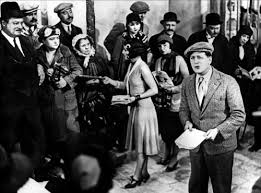
In his Maigret novels, George Simenon’s descriptions of the bistros and cafes of Paris are so beautifully observed, they create a sense of longing in the reader – who, after all, could!~~60_35.JPG) resist ‘the fragrance of frothy coffee and hot croissants spiced with a hint of rum’ –
resist ‘the fragrance of frothy coffee and hot croissants spiced with a hint of rum’ – and Simenon gave Maigret a wife skilled in the kitchen, who prepared him skate in black butter, coq au vin,
and Simenon gave Maigret a wife skilled in the kitchen, who prepared him skate in black butter, coq au vin, and soufflés.Simenon wrote of a Paris — of its bistros and quartiers, of its Chief Inspector, criminals and policemen, and of its landladies, shopkeepers, and waiters
and soufflés.Simenon wrote of a Paris — of its bistros and quartiers, of its Chief Inspector, criminals and policemen, and of its landladies, shopkeepers, and waiters4Q)Sg~~60_35.JPG) — that did not exist. But it is patterned on a real world; the archetype is
— that did not exist. But it is patterned on a real world; the archetype is  So this Paris is frozen; it is the same a decade before World War II as it is just after Viet Nam.
So this Paris is frozen; it is the same a decade before World War II as it is just after Viet Nam.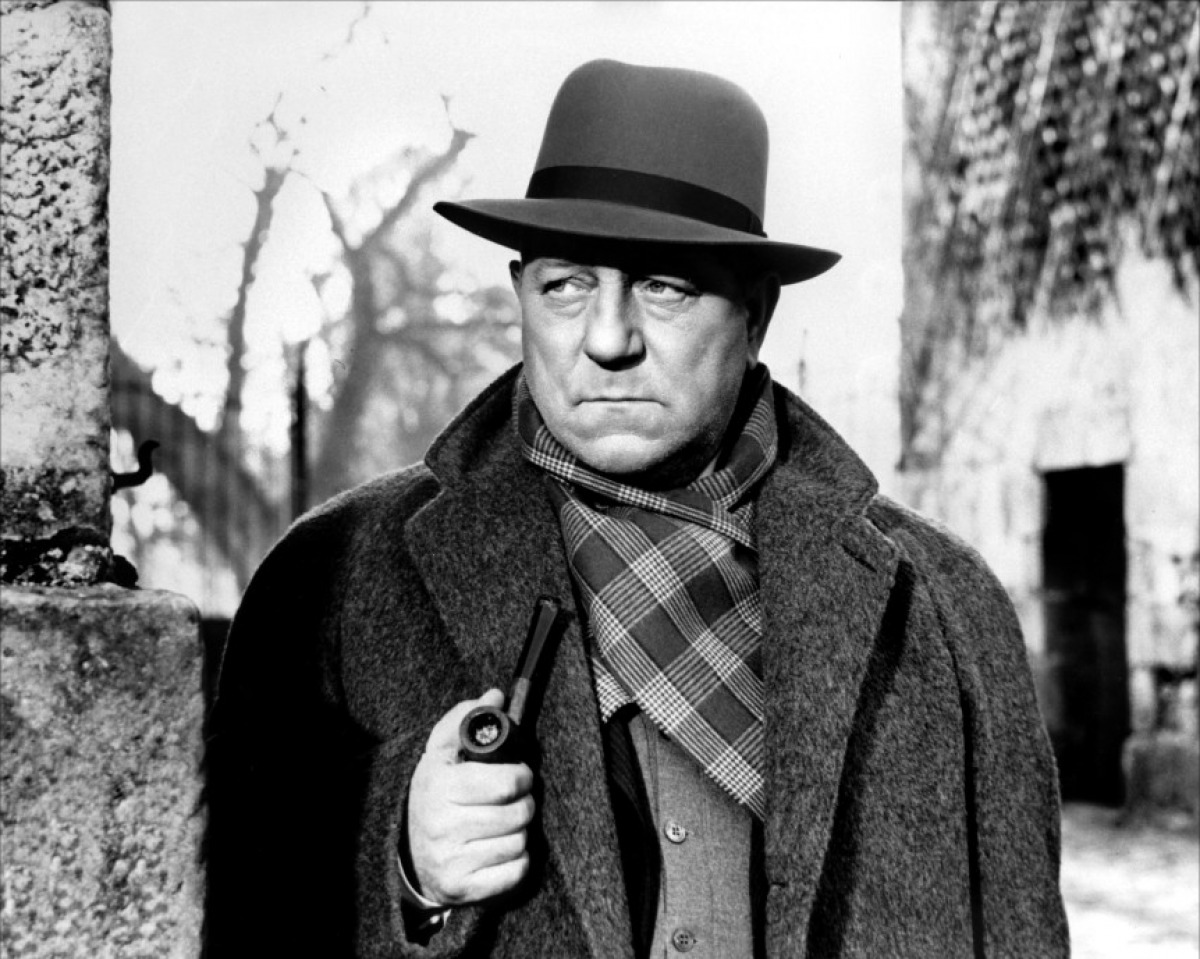 It is a Paris that existed only in memory for most of the years that saw the publication of the Maigret stories. Dennis Porter, writing about the detective novel genre,
It is a Paris that existed only in memory for most of the years that saw the publication of the Maigret stories. Dennis Porter, writing about the detective novel genre,  calls this "unchangeability in radically changed times."3 The social rules of Maigret's world are discernable because the behavior is patterned. The social order is the same throughout all the books, and the rules that form the social order are also the same.
calls this "unchangeability in radically changed times."3 The social rules of Maigret's world are discernable because the behavior is patterned. The social order is the same throughout all the books, and the rules that form the social order are also the same.
 The behavior that most clearly indicates the social structure is drinking. The other classes of things that people do that might have served the same purpose for Simenon — to give clues to what to expect — are not nearly as well developed as the drinking habits.
The behavior that most clearly indicates the social structure is drinking. The other classes of things that people do that might have served the same purpose for Simenon — to give clues to what to expect — are not nearly as well developed as the drinking habits. 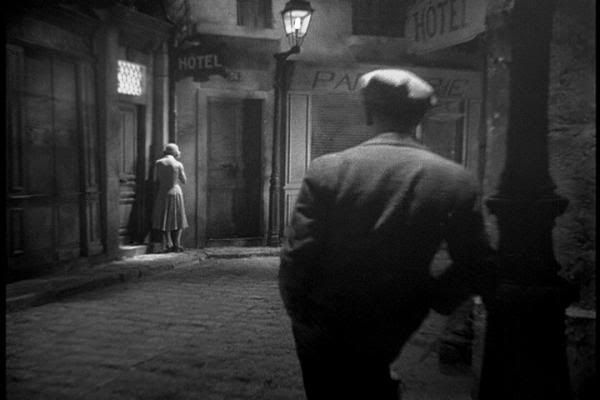 Food and dress are not often mentioned in these books, and very rarely in any detail. Drinking is used by Simenon as "a class of behavior which makes regular responses to changes in the world. Drinking is not only physically functional. Its social functions are perhaps less
Food and dress are not often mentioned in these books, and very rarely in any detail. Drinking is used by Simenon as "a class of behavior which makes regular responses to changes in the world. Drinking is not only physically functional. Its social functions are perhaps less  apparent, but also important. Drinks occur within and denote a social system.
apparent, but also important. Drinks occur within and denote a social system.  They indicate groups: the social classes, the sexes, foreigners, and outsiders. The principles of inclusion and
They indicate groups: the social classes, the sexes, foreigners, and outsiders. The principles of inclusion and  exclusion are apparent in the rules of hospitality and in other rules of drinking. Drinks also form a
exclusion are apparent in the rules of hospitality and in other rules of drinking. Drinks also form a  sequence that begins with the morning coffee, includes the apéritif before dinner, and ends with the
sequence that begins with the morning coffee, includes the apéritif before dinner, and ends with the  bedside water. Simenon pays very close attention to the structure, the social system. As Porter says, the Maigret novels are "characterized by notations on manners that make sharp distinctions between the social strata of French life.'Maigret says: "Our job is to study men. We take note of some of the facts. We try to establish others.''
bedside water. Simenon pays very close attention to the structure, the social system. As Porter says, the Maigret novels are "characterized by notations on manners that make sharp distinctions between the social strata of French life.'Maigret says: "Our job is to study men. We take note of some of the facts. We try to establish others.'' This is, no more and no less, anthropology's job, too. Maigret seeks to understand the whole of the milieu.
This is, no more and no less, anthropology's job, too. Maigret seeks to understand the whole of the milieu.  He gathers his impressions, and then he ponders; he is not analytic,
He gathers his impressions, and then he ponders; he is not analytic, but rather imaginative. He goes deeply into the local mores, tries to unravel a system of rules. The
but rather imaginative. He goes deeply into the local mores, tries to unravel a system of rules. The  clues, the details, are infinite, and few are directly related to any crime. But they are the atmosphere of the criminal and the crime.
clues, the details, are infinite, and few are directly related to any crime. But they are the atmosphere of the criminal and the crime. And if Maigret can succeed in understanding the atmosphere, he knows who the criminal is. His purpose is
And if Maigret can succeed in understanding the atmosphere, he knows who the criminal is. His purpose is

In 1930, Simenon wrote The Strange Case of Peter the Lett, which introduced Jules Maigret, Chief Inspector of the Quai des Orfèvres in Paris; the last Maigret story appeared in 1972 Few other detective novelists wrote so much so well, and particularly so well about drink;
 Maigret appears in 102 books and short stories.
Maigret appears in 102 books and short stories. Any work of fiction seeks to create a world; a good novel succeeds
Any work of fiction seeks to create a world; a good novel succeedsThe world, to be believable, must be properly formed and structured, and ordered with a logical system of rules. This is not to say that the novel's world is always familiar; it need only be coherent.

It’s no surprise either that some of the world’s best-fed fictional detectives are found within the sub-genre of Eurocrime, especially amongst the French and the Italians, where the characters tend to reflect national enthusiasms for all matters culinary.
In his Maigret novels, George Simenon’s descriptions of the bistros and cafes of Paris are so beautifully observed, they create a sense of longing in the reader – who, after all, could
 and Simenon gave Maigret a wife skilled in the kitchen, who prepared him skate in black butter, coq au vin,
and Simenon gave Maigret a wife skilled in the kitchen, who prepared him skate in black butter, coq au vin, So this Paris is frozen; it is the same a decade before World War II as it is just after Viet Nam.
So this Paris is frozen; it is the same a decade before World War II as it is just after Viet Nam. It is a Paris that existed only in memory for most of the years that saw the publication of the Maigret stories. Dennis Porter, writing about the detective novel genre,
It is a Paris that existed only in memory for most of the years that saw the publication of the Maigret stories. Dennis Porter, writing about the detective novel genre,  calls this "unchangeability in radically changed times."3 The social rules of Maigret's world are discernable because the behavior is patterned. The social order is the same throughout all the books, and the rules that form the social order are also the same.
calls this "unchangeability in radically changed times."3 The social rules of Maigret's world are discernable because the behavior is patterned. The social order is the same throughout all the books, and the rules that form the social order are also the same.
 The behavior that most clearly indicates the social structure is drinking. The other classes of things that people do that might have served the same purpose for Simenon — to give clues to what to expect — are not nearly as well developed as the drinking habits.
The behavior that most clearly indicates the social structure is drinking. The other classes of things that people do that might have served the same purpose for Simenon — to give clues to what to expect — are not nearly as well developed as the drinking habits.  Food and dress are not often mentioned in these books, and very rarely in any detail. Drinking is used by Simenon as "a class of behavior which makes regular responses to changes in the world. Drinking is not only physically functional. Its social functions are perhaps less
Food and dress are not often mentioned in these books, and very rarely in any detail. Drinking is used by Simenon as "a class of behavior which makes regular responses to changes in the world. Drinking is not only physically functional. Its social functions are perhaps less  apparent, but also important. Drinks occur within and denote a social system.
apparent, but also important. Drinks occur within and denote a social system.  They indicate groups: the social classes, the sexes, foreigners, and outsiders. The principles of inclusion and
They indicate groups: the social classes, the sexes, foreigners, and outsiders. The principles of inclusion and  exclusion are apparent in the rules of hospitality and in other rules of drinking. Drinks also form a
exclusion are apparent in the rules of hospitality and in other rules of drinking. Drinks also form a  sequence that begins with the morning coffee, includes the apéritif before dinner, and ends with the
sequence that begins with the morning coffee, includes the apéritif before dinner, and ends with the  bedside water. Simenon pays very close attention to the structure, the social system. As Porter says, the Maigret novels are "characterized by notations on manners that make sharp distinctions between the social strata of French life.'Maigret says: "Our job is to study men. We take note of some of the facts. We try to establish others.''
bedside water. Simenon pays very close attention to the structure, the social system. As Porter says, the Maigret novels are "characterized by notations on manners that make sharp distinctions between the social strata of French life.'Maigret says: "Our job is to study men. We take note of some of the facts. We try to establish others.'' This is, no more and no less, anthropology's job, too. Maigret seeks to understand the whole of the milieu.
This is, no more and no less, anthropology's job, too. Maigret seeks to understand the whole of the milieu.  He gathers his impressions, and then he ponders; he is not analytic,
He gathers his impressions, and then he ponders; he is not analytic, but rather imaginative. He goes deeply into the local mores, tries to unravel a system of rules. The
but rather imaginative. He goes deeply into the local mores, tries to unravel a system of rules. The  clues, the details, are infinite, and few are directly related to any crime. But they are the atmosphere of the criminal and the crime.
clues, the details, are infinite, and few are directly related to any crime. But they are the atmosphere of the criminal and the crime. And if Maigret can succeed in understanding the atmosphere, he knows who the criminal is. His purpose is
And if Maigret can succeed in understanding the atmosphere, he knows who the criminal is. His purpose is
The English traveller aiming to 'do' Maigret in a day can appreciate this from arrival at Gare du Nord,  described in Maigret's Memories as 'the coldest, draftiest and busiest' of Paris's stations.
described in Maigret's Memories as 'the coldest, draftiest and busiest' of Paris's stations.
 described in Maigret's Memories as 'the coldest, draftiest and busiest' of Paris's stations.
described in Maigret's Memories as 'the coldest, draftiest and busiest' of Paris's stations.
'In the morning the first night trains, arriving from Belgium and Germany, bring in the first load of crooks . . . with faces as hard as the light that falls through the dirty window panes.'

We now take a Metro to the heart of Maigret country: the police headquarters at 36 Quai d'Orfevres on the Isle de la Cite.

This is alongside Notre Dame cathedral, but the true Maigret aficionado will be more interested in the local restaurants.
In Maigret And The Flea, the detective lunches at the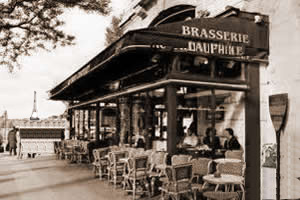 supposedly on rue de Harlay,
supposedly on rue de Harlay,  where he favoured the corner table commanding a view of the river.
where he favoured the corner table commanding a view of the river.
 supposedly on rue de Harlay,
supposedly on rue de Harlay, 
The Brasserie Dauphine is thought to have been based on a restaurant in the same spot called the Trois Marches, which has long gone.
which has long gone.
 which has long gone.
which has long gone.
Nearby, however, at 13 Place Pont Neuf, stands Taverne Henri IV, where I recommend lunch.
where I recommend lunch.
 where I recommend lunch.
where I recommend lunch.
A plaque on the wall states Simenon had been 'an honoured guest'. In fact, the proprietor, a charming, pink-cheeked man called Robert Cointepas, visited Simenon in Switzerland shortly before he died in 1989.
In fact, the proprietor, a charming, pink-cheeked man called Robert Cointepas, visited Simenon in Switzerland shortly before he died in 1989.
 In fact, the proprietor, a charming, pink-cheeked man called Robert Cointepas, visited Simenon in Switzerland shortly before he died in 1989.
In fact, the proprietor, a charming, pink-cheeked man called Robert Cointepas, visited Simenon in Switzerland shortly before he died in 1989.
'He was in a wheelchair, and he couldn't speak,' he recalls. 'But he was drinking a beer and smoking a pipe.'

M. Cointepas often retraces the steps taken by Maigret in his investigations, and at home prepares the dishes described in the books as being favoured by the detective, especially blanquette de veau - approximately, veal stew.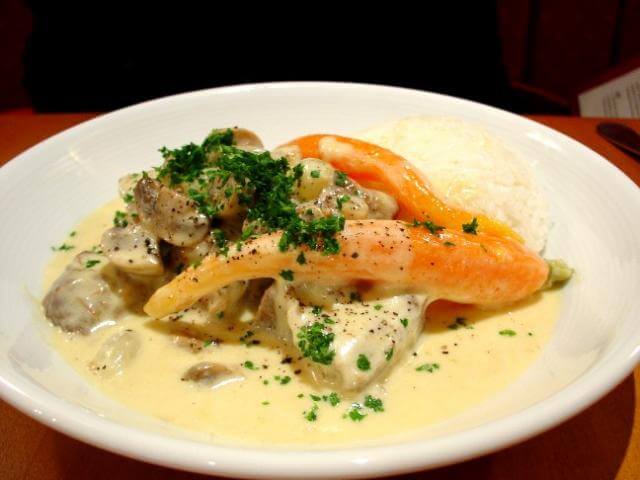

- M said he'd never had better kidneys à la liégeoise than at the Bécasse, behind the Royal Theater in Liège. [1931

- M dined off a plate of choucroute and called his office.
 at the hotel M ordered the
at the hotel M ordered the and foie gras for lunch.... Leduc said he'd lunch at the hotel, that it was always good on Thursdays, Confit d'oie..
and foie gras for lunch.... Leduc said he'd lunch at the hotel, that it was always good on Thursdays, Confit d'oie.. .. M was having lamb cutlets, as he had to avoid heavy food. M went into a restaurant famous for its soles normandes and its
.. M was having lamb cutlets, as he had to avoid heavy food. M went into a restaurant famous for its soles normandes and its - At Mère Catherine's they had the fricandeau of veal with sorrel...
 "One of my favorites" said M.
"One of my favorites" said M. - Not far off was a small restaurant favored by taxi-drivers, and M found fricandeau à l'oseille, veal with sorrel, one of his favorite dishes. He had a bottle of Beaujolais with it, and some Brie.... M went to dinner with his nephew, Jérôme Lacroix, choucroute garnie, sausage, beer, 2nd helping, couple of frankfurters, 3rd beer...
- Thérèse asked M if he'd like the mouclade,
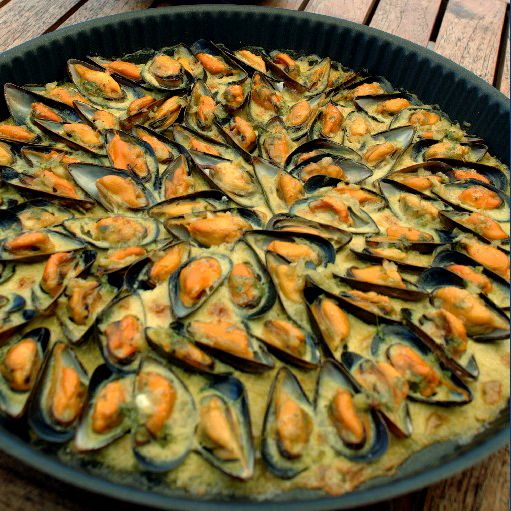 mussels in cream..... M was sure there was a touch of curry in it.... Dinner at the hotel was
mussels in cream..... M was sure there was a touch of curry in it.... Dinner at the hotel was - calves' liver à la bourgeoise. M couldn't abide liver in any form.
- M had a craving for choucroute garnie
 , in a brasserie in Montmartre or Montparnasse, with Spencer Oats.
, in a brasserie in Montmartre or Montparnasse, with Spencer Oats. - choucroute garnie. The waiter brought plates of choucroute garnie and beer to M and Picard at the brasserie.
- The plat du jour was Navarin printanier,
chalked up on the wall.
- Julie at the Restaurant du Triage told M they had Fricandeau of veal, roast pork with lentils, a nice pâté de compagneto start with.
- [Albert Rochain]'s last meal had been brandade de morue - creamed salt cod
 - an apple, white wine, and some spirits. Dr Paul said there were no truffles in the brandade, a dish usually made at restaurants.... Marchand was talking to Georges, the maître d'hôtel at the Chope Montmartre, when M and Colombani arrived. partridge aux choux, small trout, au bleu, some hors d'oeuvre, a soufflé. He said the
- an apple, white wine, and some spirits. Dr Paul said there were no truffles in the brandade, a dish usually made at restaurants.... Marchand was talking to Georges, the maître d'hôtel at the Chope Montmartre, when M and Colombani arrived. partridge aux choux, small trout, au bleu, some hors d'oeuvre, a soufflé. He said the  was one of only 50 bottles left, he'd reserved for himself.
was one of only 50 bottles left, he'd reserved for himself. - Dinner was bouilabaisse, which M liked. pastis, a banned drink.... tripes à la mode de Caen. Before they left Paris for the investigation of Marcellin's murder, M took Inspector Pyke to Les Halles, "the Market" for tripes à la mode de Caen and crêpes Suzettes,
brought in attractive copper chafing-dishes.... crêpes Suzettes.
- There were no mussels on the menu so they ate sardines in oil and celery salad.
- Mme M had left cooking on the stove: a chicken, a fine red carrot, a big onion, a bunch of parsley with the stems sticking out.... Mme M told M she'd love to go out to dinner and eat potée lorraine.... Since Mme M had been out searching for the hat, she brought back cold food from the Italian place: Parma ham, pickled mushrooms, ready-to-eat hors-d'oeuvres. The dinner reminded M of their first meals together, when she was discovering Paris, and was delighted by all the little ready-to-eat items sold in the Italian shops.
- M felt his throat was still fatty from the mutton stew he'd eaten at the Auvignat's and found so savory.... At the Boulevard Richard-Lenoir,
 he would have gotten up and taken a bicarbonate of soda.
he would have gotten up and taken a bicarbonate of soda. - Pozzo ordered for M and Lognon, scaloppine alla fiorentina.
 The cook was Giovanni.
The cook was Giovanni. - brandade de morue. fish brandade, with truffles, the dinner planned at Pardon's.
- cassoulet. The first dinner at Pardons. Others: coq au vin, couscous, sole dieppoise...
- lobster à l'Américaine.
 M ordered for himself and Alain Lagrange at the grill in the Savoy Hotel in London, along with Rhine wine
M ordered for himself and Alain Lagrange at the grill in the Savoy Hotel in London, along with Rhine wine . Alain didn't drink. M talked about the wheeled carts with roast beef and turkey.
. Alain didn't drink. M talked about the wheeled carts with roast beef and turkey. - M ordered the veau Marengo at the Brasserie Dauphine
 , with a half bottle of claret.... Opposite was the brasserie where he enjoyed going for a dish of choucroute.
, with a half bottle of claret.... Opposite was the brasserie where he enjoyed going for a dish of choucroute. - M took the profiteroles, which he didn't want, and which Mme. Chabot had had set out especially for him, since she'd remembered he'd once said he liked them.
- M had mutton and beans at Xavier Bresselles', a home-made apple tart and some old wine, followed by calvados.
- M sat down with Martine Gilloux at Gino's, ordered the hors d'oeuvre and spaghetti milanese.
- M called out to Mme M to bring him a crawfish scallop, which had been his favorite dish when they were poor and he was too late at the butcher's.... M had ordered friture de goujons, and then andouillette grillée with pommes frites.... There was Normandy sole and roast veal on the chalk menu, so M decided to have dinner there.... When M returned home he was greeted by a poulet bonnefemme.
- M and Janvier were lunching in a restaurant in the Rue de Bourgogne. They started with asparagus and went on to ray with browned butter sauce.
- M went over to the other side of the café where they were serving meals and ordered sauerkraut.
- When the Pardons came to dinner they first had a soufflé , then coq au vin. Mme M offered prunelle or framboise after dinner which Pardon refused for both of them, himself and M. (later M asked for "a drop of prunelle" - though Pardon was trying to get him to cut down on drinking.)
- At the Clou Doré, Jean-Loup Pernelle recommended the paella, starting with ramequins à la niçoise, with a dry Tavel, or a Pouilly Fumé. M chose the Tavel
- M ordered two assiettes anglaise. The maître d'hotel corrected, "two cold meats".... Mme M had made Alsatian sauerkraut as could only be found in two restaurants in Paris. The pickled pork was particularly good, and M opened two bottles of Strasbourg beer.
- Rose Vatan recommended the leg of lamb after the chaudrée, real pré-salé meat . And M and Lapointe had a carafe of red Bordeaux .
- On the menu at the hotel were cutlet Milanaise and calves' liver à la bourgeoise. M chose the cutlet. It would be grilled, of course.Noodles as a first course
- M asked Mme M to prepare skate in black butter if she could get any.... M went to a little dark restaurant on the Rue de Miromesnil, hadandouillettes with French fries that didn't taste of grease. The jovial proprieter refilled his Beaujolais, a little young, but exactly the right fruity taste. He was automatically served a baba au rhum, liberally covered with whipped cream, one of the wife's specialties.... M took his wife to a seafood restaurant in the Latin Quarter. M even had some sea urchins, flown in that day from the Midi. They had a bottle ofPouilly Fumé with their grilled red mullet.
- At the Brasserie Dauphine M ordered the blanquette de veau.... Mme M had cooked chicken with taragon, garnished with asparagus tips.... Mme M had made an omelette aux fines herbes, a salad flavored with garlic croutons, and finally, ripe juicy peaches.
- M phoned Mme M who had snails for lunch. She always had something he especially liked on days he didn't go home to ear.]
- For dinner Mme M had made raie au beurre noire. She said she hoped it wasn't too rich for him.... M had Mme M warm up thechoucroute for him, but because of his cold he could barely manage more than a mouthful or two. Mme M brought him two aspirins.... M went home for lunch, where Mme M had calves' liver à la bourgeoise. It was one of his favorite dishes.... If anything M preferred calves' liver cold, after it had stood for a day. For dessert he cracked a few walnuts and almonds .... He had had only two glasses of claret with his meal.... Sunday lunch was roast beef, braised celery and mashed potatoes. The Sunday roast. It reminded him of his childhood, except that in those days he had liked his meat well done.
- M went with Lapointe to the Brasserie Dauphine. Ordered a bottle of Beaujolais, herring filet, and delicious andouillettes, fresh from Auvergne that morning, served with chips.... Since M hadn't been home for lunch, Mme M warmed up the lamb stew. M was delighted.... Lunch was blanquette of veal.
- M went home for lunch. Mme M had made him coq au vin,
 one of his favorite dishes, but he ate without seeming to notice what was on his plate, nor did he say a word about it.... Returning from Umbrella Pines, M had a sudden craving for pizza when he spied a little Italian restaurant.
one of his favorite dishes, but he ate without seeming to notice what was on his plate, nor did he say a word about it.... Returning from Umbrella Pines, M had a sudden craving for pizza when he spied a little Italian restaurant. - Had a plate of seafood and a bottle of Muscadet while waiting for it. At Nantes police station he was offered another glass
 ofMuscadet Muscadet which he refused: "My doctor's prescribed moderation."
ofMuscadet Muscadet which he refused: "My doctor's prescribed moderation." - When Mme M asked what he'd like for lunch he answered, ham, boiled potatoes lightly fried in oil, a green salad.... M and Janvier ordered the coquilles Saint-Jacques, followed by braised rib of beef, with a Beaujolais....
 M had bouillabaisse
M had bouillabaissein a tidy restaurant.
- M usually loved the pot-au-feu
with pauvre-homme sauce, but today he hardly noticed what he was eating. He asked for a large cup ofcoffee, which meant his morning cup, which held a third of a liter.
No comments:
Post a Comment